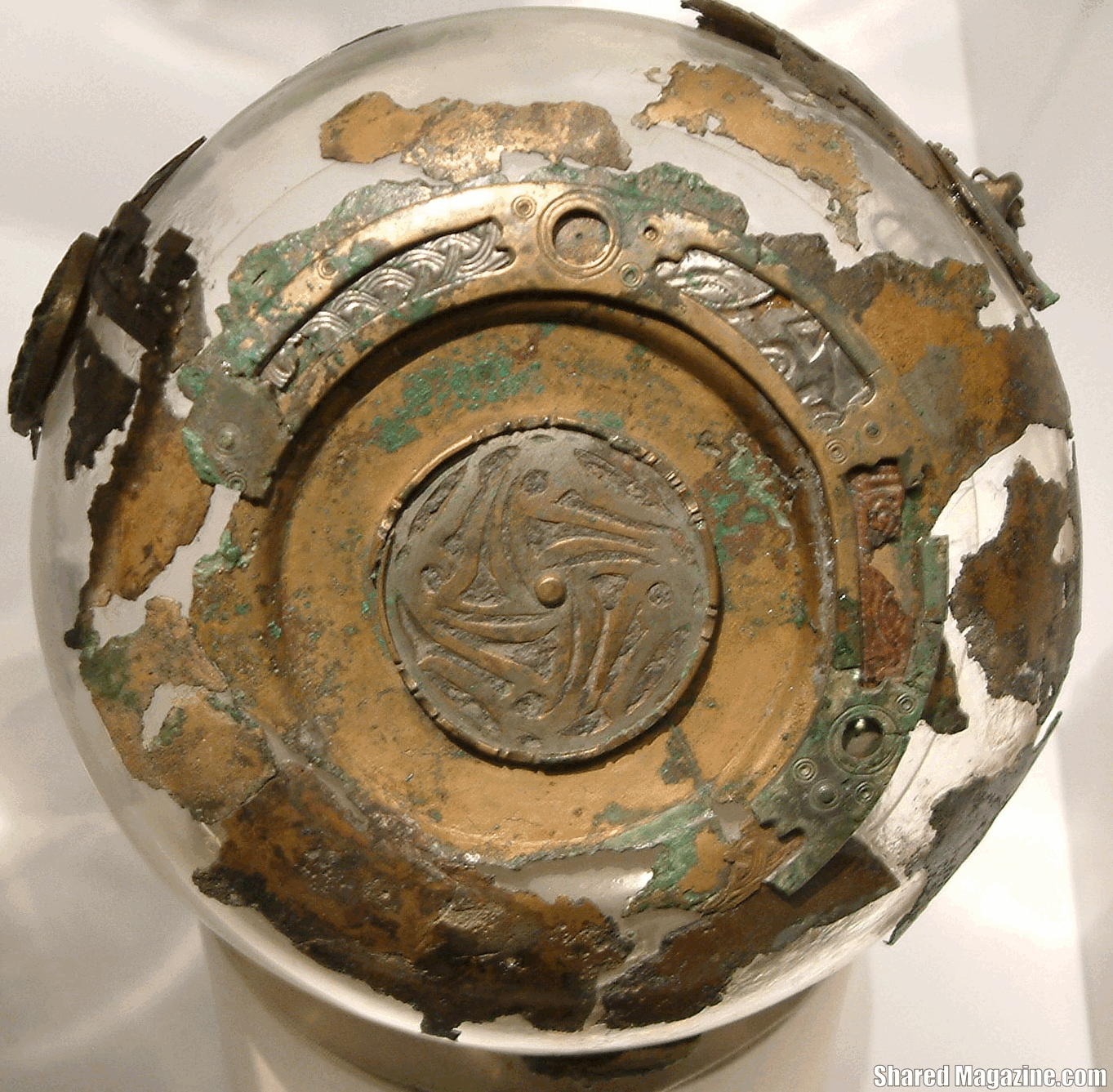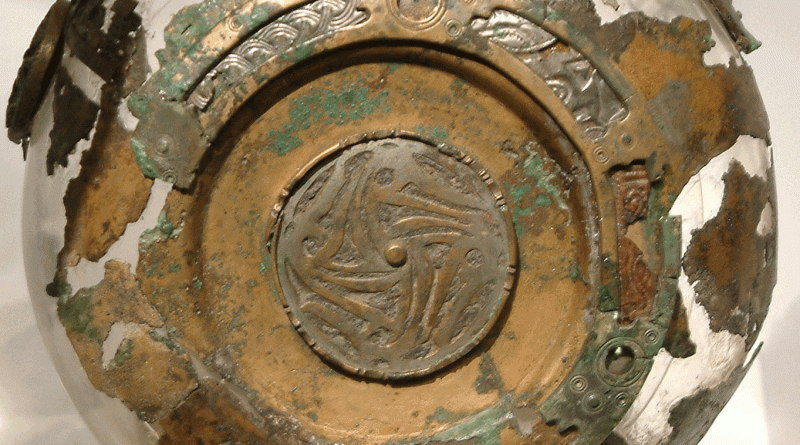Unlocking the Mysteries of the Benty Grange Hanging Bowl: A Journey into Ancient Artistry and Cultural Significance

Introduction
The Benty Grange Hanging Bowl is an ancient artifact that has fascinated archaeologists and historians alike. Discovered in the 19th century, this intricately crafted piece offers insights into early medieval craftsmanship and societal practices. This article delves into the history, significance, and interpretations surrounding the Benty Grange Hanging Bowl.
Discovery on Benty Grange Hanging Bowl
The Benty Grange Hanging Bowl was unearthed in 1848 by Thomas Bateman, a renowned archaeologist, at Benty Grange, near Monyash in Derbyshire, England. The discovery occurred during excavations of a Saxon barrow.
Origin and Date
Scholars estimate that the Benty Grange Hanging Bowl dates back to the 7th century AD, placing it within the Anglo-Saxon period of Britain’s history. Its exact origin and the circumstances of its creation remain subjects of scholarly debate.
Material and Construction
Crafted from sheet silver, the Benty Grange Hanging Bowl showcases exceptional craftsmanship. It features intricate designs and precise detailing, indicating the skill of its makers.
Decorative Elements
The bowl is adorned with motifs depicting animals, including boars and birds, as well as geometric patterns. These decorations hold symbolic significance, offering clues about the beliefs and customs of the people who created the artifact.
Cultural Importance
The Benty Grange Hanging Bowl holds significant cultural value, serving as a tangible link to the past. Its intricate designs and craftsmanship shed light on the artistic traditions of the Anglo-Saxon period.
Archaeological Insights
From an archaeological perspective, the Benty Grange Bowl provides valuable insights into the material culture and social dynamics of early medieval Britain. Its discovery has contributed to our understanding of burial practices and the exchange of goods during this period.
Ritual Use
Some scholars speculate that the Benty Grange Bowl may have had ritualistic significance. Its placement within a burial mound suggests that it could have been used in funerary ceremonies or as a vessel for offerings to the deceased.
Social Status Symbol
Alternatively, the elaborate craftsmanship of the Benty Grange Bowl suggests that it may have been a symbol of wealth and social status. Its ownership and display could have conferred prestige upon its possessor within Anglo-Saxon society.
Similar Artifacts and Comparisons
Similar artifacts from the Anglo-Saxon period provide context for understanding. By comparing it to other objects found in archaeological contexts, scholars can glean insights into regional styles, trade networks, and cultural interactions.
Preservation Efforts
The Benty Grange Hanging Bowl is currently housed in the British Museum, where it undergoes careful preservation to ensure its long-term survival. Access to the artifact allows researchers and visitors alike to appreciate its beauty and historical significance.
Conclusion
In conclusion, the Benty Grange Hanging Bowl stands as a testament to the artistic skill and cultural richness of the Anglo-Saxon period. Its intricate designs and symbolic motifs continue to captivate scholars and enthusiasts, offering valuable insights into the past.
FAQs
What is the significance of the Benty Grange Hanging Bowl?
The Benty Grange Hanging Bowl is significant for its intricate craftsmanship and cultural insights into the Anglo-Saxon period.
Where was the Benty Grange Hanging Bowl discovered?
The artifact was discovered at Benty Grange, near Monyash in Derbyshire, England, in 1848.
What materials were used to create the Benty Grange Hanging Bowl?
The bowl is crafted from sheet silver and features elaborate decorative motifs.
What theories exist regarding the purpose of the Benty Grange Hanging Bowl?
Scholars have proposed theories ranging from ritual use in funerary ceremonies to its function as a symbol of social status.
Where is the Benty Grange Hanging Bowl currently located?
The artifact is housed in the British Museum, where it is carefully preserved and displayed for public viewing.



